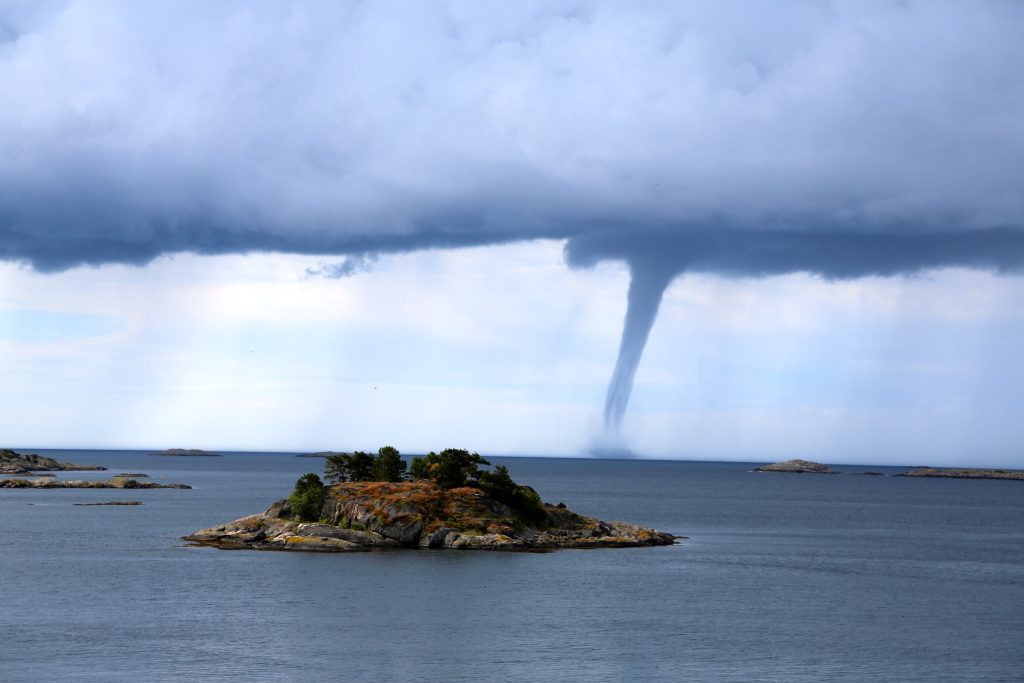
August 22, 2023 By Meteorologist Michael Page
Last week, a short-lived EF-1 tornado touched down near South Shore Hospital in Weymouth.
At the time of the storm Hingham was under a tornado warning, sending neighbors across town into safe shelter. Though no twister impacted Hingham, a total of seven have been reported across the Bay State this year, making many wonder if this is some kind of “new normal.”
Tornado History in New England
Tornadoes in New England are not new.
In fact, America’s first recorded tornado happened right here in Massachusetts.
In 1643, Governor John Winthrop wrote about a sudden gust of wind that whipped up dust, lifted his meetinghouse, and killed an observer.
Of course this was not actually the first tornado that ever occurred in what we now call the United States. It was just the first time someone wrote it down, leaving the notes for later generations to discover.
In the centuries since that first observation, we’ve started rating tornadoes on a scale from 0-5, 5 being the strongest.
At first this was simply known as the Fujita (F) scale, named for a famous researcher, but more recent upgrades resulted in the “Enhanced” Fujita (EF) scale.
New England’s deadliest tornado on record was an F4. The twister touched down in June 1953, carving a path through Worcester and surrounding communities. It killed nearly 100 people. Debris picked up in the twister landed as far away as the Blue Hill Observatory in Milton.
In 2011, an EF-3 hit Western Massachusetts, leveling homes near Springfield.
In 2014, a sudden EF-2 tornado heavily damaged Revere, just outside of Boston.
And in between each of these noteworthy twisters, many other small tornadoes touched down, flattening trees and damaging neighborhoods.
Each New England state averages about 1-3 tornadoes a year. The vast majority of those tornadoes are small.
The Weymouth Tornado
Friday’s Weymouth tornado fell into this category.
The EF-1 tornado packed estimated winds of 110 MPH, but it was exceptionally small.
It was on the ground for just a third of a mile, and stretched just 100 yards wide. It touched down at 9:52 and lifted by 9:55 AM.
A far cry from the mile-wide tornadoes that wipe out entire towns in the middle of the country. Those can be on the ground for nearly an hour.
Still, for the few homes in this tornado’s path near South Shore Hospital, the storm required lots of cleanup, with many downed trees.
The Numbers this Year
The Weymouth tornado was the seventh to touch down in Massachusetts this year.
Others were reported in Foxboro, Mattapoisett, Barnstable, Stoughton, North Attleboro, and North Brookfield.
A tornado has also been confirmed in Connecticut this season, as well as Rhode Island.
The Rhode Island tornado is the most significant to hit New England in years—an EF-2 that crossed a highway and lifted a car into the air briefly.
In Northern New England New Hampshire and Vermont have each logged two twisters. A land spout, which is similar to a tornado, was reported earlier this year in Maine.
Are we seeing more tornadoes lately?
Nationwide research does show tornado frequency is changing, with the eastern part of the country favoring more activity in recent years.
There are caveats to that statement, however.
The number of low end tornadoes, EF-0 and EF-1 in particular, are increasing. There’s been a decrease in EF-2, EF-3, and EF-4 twisters. EF-5 tornado frequency has been declining as well, but not as quickly.
Parsing out if there are actually more tornadoes occurring, or if we are just better at spotting them, is challenging.
For starters, weather radar has undergone dramatic improvements in the last decade. It’s now easier than ever to spot a tornado as it is occurring, even where there are no people to see it first hand.
The prolific spread of smart phones—each armed with a camera—also makes it virtually impossible to miss a tornado that occurs.
Those images then allow local and national media to fixate on tornadoes, making it seem like they are happening at a pace never seen before.
It’s widely understood in the meteorological community, however, that these two technological breakthroughs make it almost impossible to accurately compare tornado counts now to those in, say, the 1970s, when comprehensive datasets generally began.
Is there a link to climate change?
At the moment, given the change in how we observe tornadoes, it’s almost impossible to link any increase in tornadoes to climate change.
It is worth noting, however, that New England tornadoes generally happen in warm, humid environments.
These conditions are becoming more common with climate change. So, long term, it is possible we see more low-end tornadoes like we’ve seen this summer.
It’s just too early to say for certain if the frequency is really changing, given the recent changes to technology and the lack of long term comparative data.
Tornado Safety
Regardless of the frequency, it’s important to remember key safety information if you find yourself in a tornado prone environment.
First of all, a tornado watch means that conditions favor storms that may generate a tornado.
A tornado warning is issued when a tornado is imminent or occurring. Keep in mind, however, that tornadoes in New England are more often than not very small, impacting just a few blocks or streets. Storms impacting entire towns are exceedingly rare here.
If a tornado is imminent for your location, always seek the lowest level of a building away from windows. A basement is ideal, but a bathroom or interior closest is a viable back-up.

